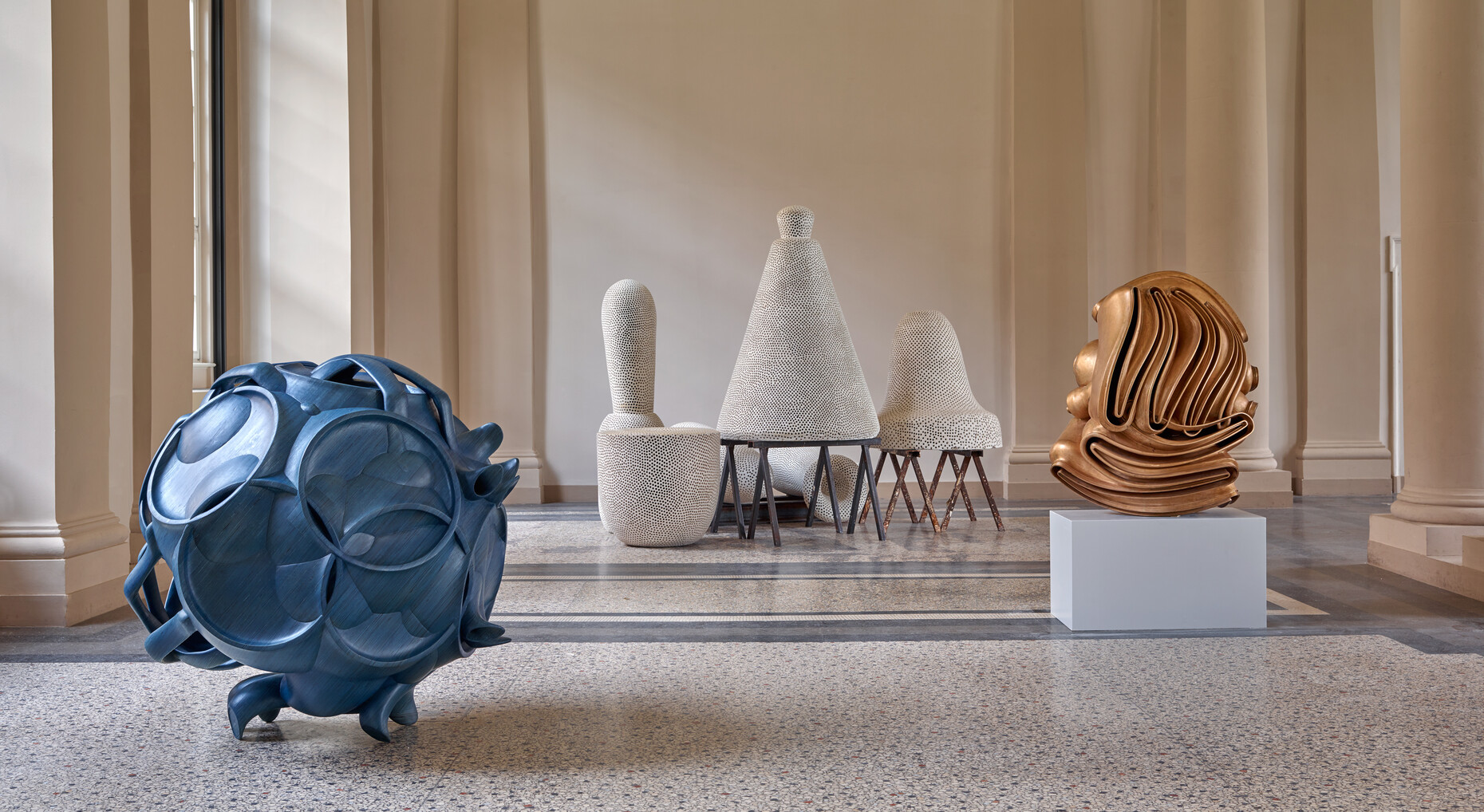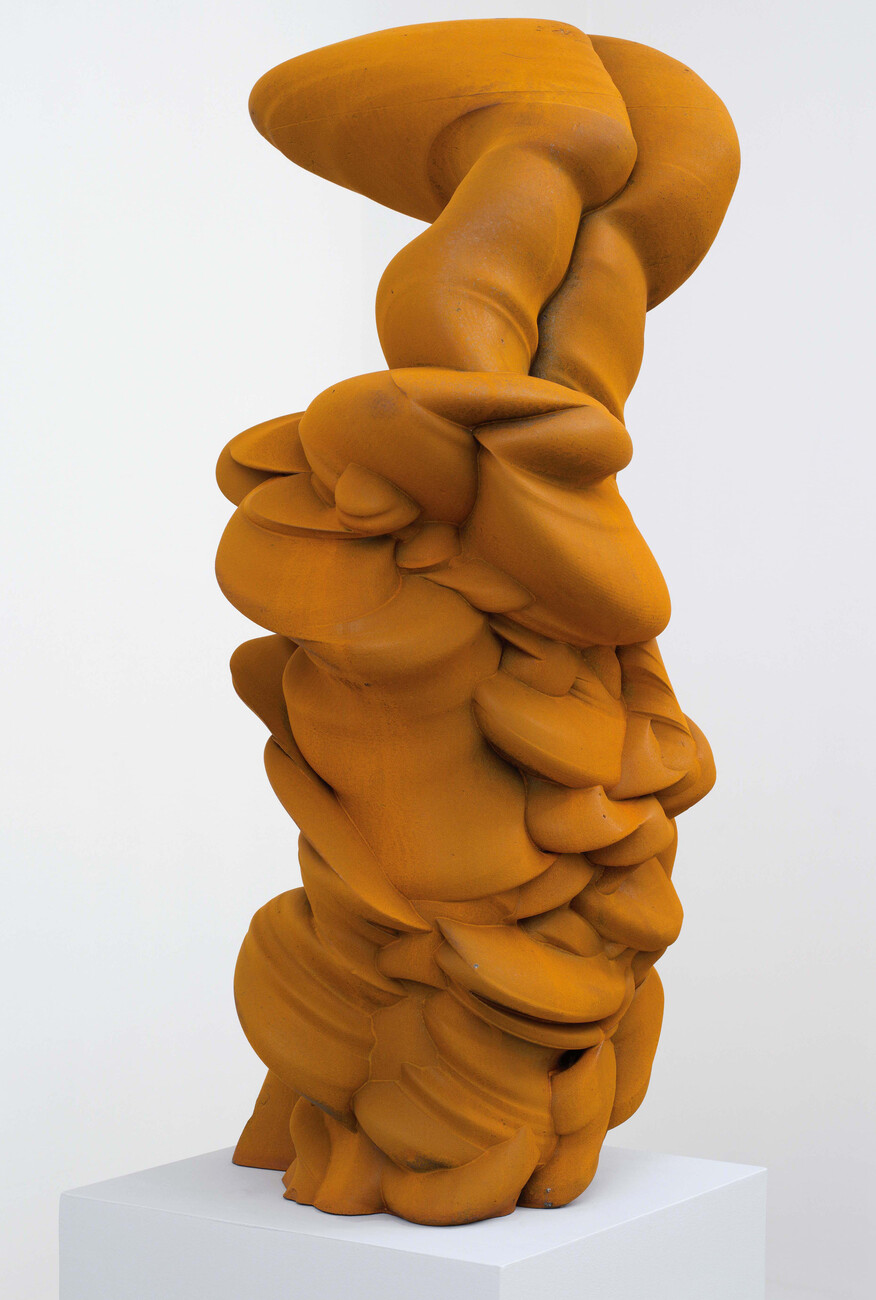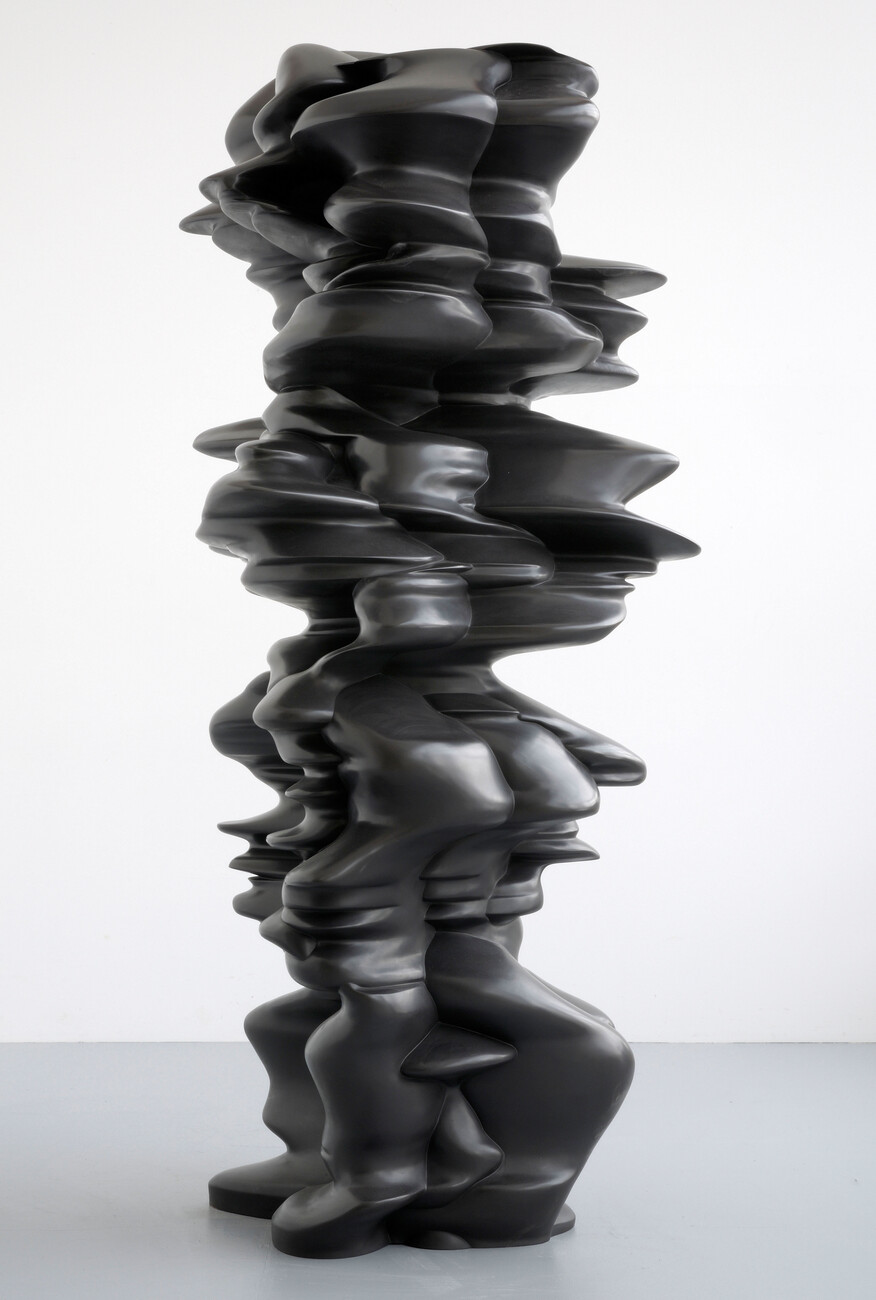Stable instability
The historic main hall of Hessisches Landesmuseum in Darmstadt provides an ideal setting for Tony Cragg’s complex sculptures. Originally designed by architect Alfred Messel to present a comprehensive study collection comprising plaster casts of sculptures from Classical Antiquity, the church-like space receives ample daylight from its tall windows. For the exhibition, curator Klaus Pohl has selected some 20 works from the British artist’s oeuvre from the 1980s through to the present day, complemented by new versions of the sculptures Versus and Willow in wood, presented for the first time. In addition, at the front of the space there are fossils, lined up in glass display cases: Tony Cragg collected them himself, some as a child on England’s south coast, others in the South of France or in Mettmann in the Lower Rhine region. They include minerals like calcites and fossil snails, shells and a sea urchin. “A habit of mine,” Cragg says. These are unique shapes, which as fossils are part of a past era of the Earth’s history, but for the sculptor they have a timelessness and undiminished fascination.
Similarly, Tony Cragg’s sculptures sometimes allude to seemingly primeval forms. Moreover, they seem to tower up into the space, often several meters tall – timeless shapes that appear organic and real, making you almost wish that for a moment they would be released from their petrified state and begin to turn and spin.
For his exhibition “Unnatural Selection” Tony Cragg has, with a view to the natural history collection at the Landesmuseum, primarily chosen works with an affinity to nature in order to place them in relation to fossils and stones. The sculptor marvels at flora and fauna, is thrilled with their shapes and structures, and takes his inspiration from them. Now and again a human ear towers up out of a complex sculpture; or the profile of a face is formed on a section of the sculpture, as if man and nature were intricately woven into the shaped mass. What fascinates him is a mixture of organic and geometric structures of the body.
Nonetheless, his works are not easy to categorize. Cragg is not concerned with form per se: “I don’t wish to portray, represent or copy anything. What I long for is a material experience,” he says. When he draws and subsequently produces a small model before starting on the actual sculpting work he does not have a clear picture in mind: “I am very often surprised where the process takes me.” And he adds: “Basically, that is my life, focusing on this.” In this process, the material surfaces are essential for him. For Cragg they act as visual indications of the realities concealed in the material, as it were. According to the artist, wanting to look below the surface of things is a deeply human need.
Capturing what you perceive
Tony Cragg does not have a favorite amongst the materials he employs. Wood, metal, glass, plaster, marble – all have meaning for us, he explains; each has its own tonality, is a little like an instrument in an orchestra. Each one has a certain scope of expressive options, but you cannot simply replace a flute with a violin – and both are important to him.
Cragg needs each material with its own specific properties and resistances in order to find a form of expression amongst the wealth of sculptural possibilities, and to give shape to perceptions that normally elude us. That is not possible without investigating the material’s inner structure and composition and then having the sculpture evolve out of this. Thus in dialog with the material he defines contours, stacks and glues parts, separates and joins things together. And regardless of whether Cragg finds a fossil or has to decide on the material, it is always a matter of making a choice. This individual selection belongs to our everyday perception and contrasts with the teachings of Darwinism, which underscores natural selection, he argues, be it in art, politics or interpersonal relationships. And he adds: “We live in a time which is curated.”
Tony Cragg started exploring the materials of his surroundings, examining surfaces and the shape of industrially manufactured objects early on. They often come from trash. He has made collages from such plain, series-produced forms, often colored plastic objects, removing them from their original context and combining them to form highly expressive assemblages that are influenced by Pop art and Fluxus. “Industry produces a boring, form-impoverished material world around us,” argues Cragg. Design, he continues, “is not individual enough for me and thematically it is also too weak for me. It has no significance; it merely seeks to please.” In sculpture however human activity gives rise to a selection that seeks to counter this formal impoverishment.
Tony Cragg “Unnatural Selection”
Hessisches Landesmuseum Darmstadt
Runs until March 27, 2017





